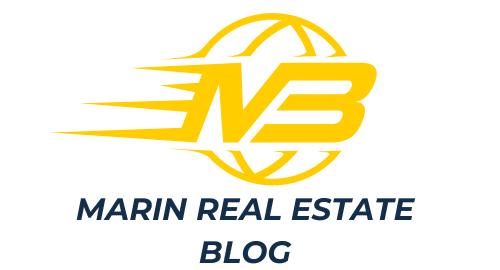What are the innovative methods for achieving water neutrality in real estate developments in arid regions?

Water, a precious resource often taken for granted, has become a focal point of sustainability concerns worldwide. Our changing climate coupled with an ever-growing population has put an increasing strain on water resources. According to a study available on Google Scholar, global water usage is expected to increase by nearly 30% by 2050. Furthermore, our planet’s supply of potable water is dwindling, especially in arid areas, which are hit hardest by climate change.
In this context, the real estate development industry is under pressure to evolve and adapt. The emerging concept of water neutrality, which means that the amount of water used should not exceed the amount of rainwater naturally available in the area, is gaining traction. Sustainable water management systems that rely on local resources and utilize innovative practices are becoming a necessity.
A lire en complément : What are the best practices for real estate developers in integrating public transportation access into their projects?
This article explores the innovative methods for achieving water neutrality in real estate developments in arid regions. We delve into various sustainable practices such as rainwater and stormwater management, soil moisture management, and the integration of these practices into the design of new developments.
Rainwater and Stormwater Management
Rainwater and stormwater management is a crucial component of water neutrality. The idea behind it is to capture, store and use the rainwater that falls on a property, thereby minimizing reliance on traditional water sources.
Lire également : How can real estate investments be structured to support the transition towards more sustainable urban living environments?
There are numerous ways to manage and use rainwater in arid areas. One innovative method is the use of bioswales and rain gardens. These landscape elements are designed to concentrate and absorb rainwater, radically reducing runoff. They can be incorporated into the design of new developments, providing a functional and aesthetic element.
Another method is the installation of rainwater harvesting systems. These systems capture rainwater from roofs and other surfaces, store it in tanks, and use it for various non-potable applications such as irrigation, flushing toilets, and washing clothes.
Stormwater management is also a key component. By slowing down and storing stormwater runoff, we can reduce the impact of heavy rain events on the local water system and use the stored water at a later date.
Soil Moisture Management
Soil moisture management is another critical aspect of achieving water neutrality. Arid regions often suffer from poor soil quality, which affects the ability of the soil to hold water. Improving soil quality can significantly increase the water-holding capacity of the soil, reducing the need for irrigation.
One way to improve soil quality is through the addition of organic matter. Organic matter increases the soil’s ability to retain water and nutrients. Composting is an effective way to produce organic matter and can be easily integrated into a real estate development.
Moreover, the adoption of xeriscaping — landscaping with plants that require minimal water — can also help manage soil moisture. The use of native plants that are adapted to the local climate and soil conditions can drastically reduce water demand.
Sustainable Design and Development
To achieve water neutrality, sustainable design and development is crucial. It involves integrating water-saving practices into the construction of new developments. This can range from the use of water-efficient appliances and fixtures to the design of the building itself.
For example, the design of a building can influence its water use. Buildings designed with large roof areas can capture more rainwater for use. Similarly, designing buildings to take advantage of natural shade can reduce the need for landscape irrigation.
Additionally, the use of greywater systems, which recycle water from showers, washing machines, and sinks for use in irrigation and toilets, can significantly reduce a development’s water demand.
Leveraging Technology and Online Resources
In addition to these methods, leveraging technology can help promote water neutrality. Real-time water use monitoring can provide valuable data and insights, allowing for timely adjustments and water-saving measures.
Online resources such as Google Scholar, Crossref, and the Net can provide valuable research and information on the latest innovations in water management. These platforms offer a wealth of knowledge to anyone interested in the subject, from professionals in the field to ordinary individuals looking to make a difference.
The Role of Policy and Regulation
Lastly, policy and regulation play a critical role in promoting water neutrality. Governments and regulatory bodies need to create an environment that encourages and rewards sustainable practices. This can be done through incentives for water-saving measures, stricter building codes, and regulations that promote water neutrality.
In conclusion, achieving water neutrality in real estate developments in arid regions is a complex, multi-faceted challenge. It requires the integration of various innovative practices and a concerted effort from all stakeholders. By doing so, we can ensure a sustainable future for our water resources, our climate, and our communities.
Incorporating Technology in Water Management
The advances in technology have opened up novel ways to tackle the issue of water scarcity in arid regions. Technologies such as real-time water use monitoring provide valuable data that can help minimize water usage in real estate developments. These technologies can track the amount of water being used in a building, identifying areas of high water use and providing insights on how to reduce it.
For instance, smart irrigation systems can be used in the landscaping of properties, using sensors to determine the exact amount of water needed by plants, thus preventing overwatering. This kind of technology is especially valuable in arid regions, where water is a scarce resource.
Additionally, technologies like remote sensing and satellite imagery can be used to monitor soil moisture levels in real time. This information can help guide irrigation practices, ensuring that water is only used when and where it’s truly needed.
Another area where technology can play a significant role is in the treatment and reuse of greywater. Greywater systems, which recycle water from showers, washing machines, and sinks, can significantly reduce a development’s water demand. Advanced greywater treatment systems can even render this water potable, further contributing to water neutrality.
Online resources like Google Scholar, Scholar Crossref, and Preprints Org provide access to the latest research on water management technologies. By staying informed about these technological developments, developers can be better equipped to achieve water neutrality in their projects.
The Necessity of Policy and Regulation
Without a doubt, achieving water neutrality is not only a matter of technological innovation or sustainable practices. It also requires supportive policies and regulations to guide and incentivize these efforts. Governments and regulatory bodies have a crucial role to play in promoting water neutrality.
Strict building codes can be implemented to ensure new developments adhere to water-saving measures. These codes could include requirements for the incorporation of water-efficient appliances and fixtures, the use of rainwater harvesting systems, and the installation of greywater treatment systems.
Regulations can also be put in place to promote the use of native plants in landscaping, which can drastically reduce water demand. Incentives can be offered to encourage the adoption of such practices.
Furthermore, water pricing policies can be revised to reflect the true cost of water, providing a financial incentive for consumers to conserve water. This can be particularly effective in residential areas, where water consumption is often high.
Governments can also provide funding for research into new technologies and practices that promote water neutrality. Resources like Google Scholar and Scholar Crossref can be used to stay informed about the latest findings from this research.
Conclusion
As climate change continues to exacerbate water scarcity, particularly in arid regions, achieving water neutrality in real estate developments has become an urgent goal. Achieving this requires a multifaceted approach, combining innovative methods like rainwater and stormwater management, soil moisture management, sustainable design and development, and the use of technology in water management.
But the quest for water neutrality does not stop there. It is crucial that supportive policies and regulations are in place to guide and incentivize these efforts. By working together, we can ensure a sustainable future for our water resources, our climate, and our communities. As the study area expands and more research is undertaken, let’s hope that the green version of our future, where water neutrality is the norm, becomes a reality sooner rather than later.
